Hey everyone! My name's Jay Treat and I'm a professional game designer.
I owe a considerable amount of my success in this industry to GDS2 where I was the first finalist eliminated. That failure galvanized my determination to prove and improve myself, and the experience of collaboration and receiving critical feedback lit my path forward.
I've made many friends in the industry, with whom I regularly trade playtesting, criticism, and support. I write about Magic design every weekday on Goblin Artisans. It's been seven years now… Strange to realize that only Mark Rosewater has written more on the subject than I. My fellow Artisans give me feedback on the Cool Card Design of the Day and I give them feedback on the Weekend Art Challenge.
I love drafting and don't get to as many full drafts as I used to, so I've created a number of draft formats and 2- or 3-player formats. You should absolutely check out Live Booster Draft. LBD League is by far the most fun you can squeeze out of six booster packs.
If you enjoy bluffing, deduction or micro-games, check out my game Cunning Folk from Button Shy Games. If you enjoy engine-building or negotiation (in clever magnetic boxes that unfold into game boards), check out Merchants of Araby from Daily Magic Games. That one shares considerable DNA with Magic, so if you like multiplayer Magic you'll definitely want to check it out. If you enjoy trick-taking card games, check out Cahoots from Mayday Games. If you enjoy asymmetric partnerships, or games of bodily-dexterity, look for A'Writhe: A Game of Elditch Contortions from Wizkids later this year. And if you like roleplaying games and either Buffy/Supernatural or Star Trek, check out Legacy of the Slayer and Strange Gravity on DriveThruRPG.
I dream about this job often. I've long dedicated myself to the task of becoming the ideal candidate for this position.
Thanks for your time and consideration in this contest, judges, and thanks for your work on and passion for Magic. Thanks to my friends for your support. Good luck, competitors!
2) An evergreen mechanic is a keyword mechanic that shows up in (almost) every set. If you had to make an existing keyword mechanic evergreen, which one would you choose and why?
Monstrosity is a brilliant mechanic because it delivers on the universal desire to build monsters and kick effects. It accomplishes that on a single card, in a way that informs play and acts as a sink for excess mana in the late game. Yet it avoids issues that similar solutions suffer.
"The Kavu Titan problem" occurs because players want to maximize the value of their card, and the value of swapping a 5cc 5/5 in favor of a 2cc 2/2 is invisible, so most players will only be happy kicking their bear. Sinuous Vermin lets you get your 2/2 when you need it and upgrade it to a 5/5 when you've got the mana.
Monstrosity obsoletes kicker on creatures, but also echo, morph, and self-sacrifice effects, to an extent. Why Hammerheim Deadeye when you can Arbor Colossus? Why Aerie Bowmasters when you can Nessian Asp? Why Felidar Cub when you can Kalemne's Captain? (There are answers, but this one's better.)
Monstrosity can put big one-time spell effects on creatures that don't have to be ETB effects, without making those creatures expensive.
We can make simple but exciting french vanilla monsters.
The biggest downside is board complexity: So far, monstrosity can be activated any time and affects the board. We can add {T} to the cost, or a timing restriction like sorcery-speed / only-during-your-turn.
Monstrosity was perfect for Theros because monsters were a major theme of that block. Does the flavor fit as well everywhere else? How many Magic sets have been monster free? The name will make some creative choices harder, since we might want to put it on a mana dork and it's unusual for an elf to become monstrous (outside Shadowmoor).
Do all sets want creatures that grow, and a mana sink? +1/+1 counters are welcome in any set without -1/-1 counters (which are infrequent). Not all sets need a mana sink mechanic, but few will mind one. Also, monstrosity doesn't have to be activated with mana; It could be triggered by conditions, like completing quests or ascending.
3) If you had to remove evergreen status from a keyword mechanic that is currently evergreen, which one would you remove and why?
Assuming regeneration is already gone, the top candidates for removal are defender, double strike, hexproof, and trample.
Defender is the only downside mechanic still evergreen. It's only been used 6 times in the current Standard and with good reason: Walls aren't particularly fun or interesting. They have their fans and needn't be purged from the game, but defender could be deciduous and the vast majority of players wouldn't even notice.
Double strike is exciting and greatly rewards combat tricks and creature buffs, but it's also dangerously powerful and frankly just a little more exceptional than we like our evergreen mechanics. Used 11 times in Standard, Double strike could be deciduous, appearing in every second or third set, and that would be no great loss.
Hexproof is really good at letting players make awesome creatures without their opponents interfering. A little too good. It's so good, that we have to be careful what creatures we put it on, and what auras and equipment we print alongside them. It's also ironic that we wanted to make something more interactive than shroud, and ended up making something decidedly less interactive in practice. We've gotten this keyword under control, so replacing it isn't imperative, but there exist alternatives that achieve hexproof's goals without its problems.
Trample gets used a lot, and with good reason. It's a (usually) very intuitive way to make big creatures matter without letting them through unhindered. The reason I list it as a possibility to remove is that there are interactions where trample is confusing (most commonly when double-blocked and/or combined with death touch), and there is an alternative mechanic that serves nearly the same function that is always clear: Daunt.
Which do I choose? Hexproof is the most problematic among these, so if we get to replace it, I'd choose that. If we're strictly shrinking our list of evergreen keywords, though, defender becoming deciduous will sadden the fewest players and actually gladden some. I choose gladden.
4) You're going to teach Magic to a stranger. What's your strategy to have the best possible outcome?
Two-Headed Giant is the best way to learn Magic. Get two experienced players and two new players and pair them the other way. Let the newcomers choose a pre-constructed deck by flavor. The decks want to be from the same Standard or Block, preferably a recent one. (Don't start with Commander because we don't want to overload our friends with 404 unique cards). Any strategy but combo is fine, though aggro and midrange are ideal.
If you can build your own decks, make them one or two colors, with just one mechanical theme. Try to focus on vanilla and french-vanilla creatures.
Teach Magic as you would any other game: Explain the theme and the premise, who the player is in the fiction and what they'll be doing: "You're an inter-dimensional wizard in a duel, casting spells unique to the various planes you've visited." Explain the goal and how that's generally achieved: "The first team to reduce the other team's life total to 0 wins, and we do that by summoning creatures to attack our opponents, as well as a few direct sorceries." Show them the cards: "Every spell costs mana to cast. This card costs one red mana and two more mana of any kind. You get mana from land cards, like this one, and you can play one land per turn."
In essence, start from the highest perspective you can and work your way down toward the most relevant and interesting things. Tell them only what they need to know, only when they're ready for it. Play wrong for a game if you have to. Cheat them out of land screw if you have to. Just keep them casting spells and doing combat. If they're not overwhelmed with rules and card text, and they're doing stuff, they'll be happy.
…And they probably will be in 2HG: Your new players have someone who can give them just enough advice to keep them from ruining their own experience (and no more—save that for later!) and the format gives players some extra time to find their bearings.
5) What is Magic's greatest strength and why?
Magic's greatest strength is that it's continually reinventing itself. No game has evolved as much as Magic, and the progress made over 25 years is unparalleled. Magic's progress advances the industry.
In the short-term, Magic releases a new set for Limited and Constructed play four times a year, which means that players who don't love one set might well pick the game back up three months down the road, and that players who love all the sets fall further in love with the game. Magic is more than just Draft and Standard, though, and R&D designs products for relatively niche fan bases, catering directly to many disparate segments in a way no other product line does.
This constant flow of content and at-least-periodic interest keeps players around long enough to enjoy the benefits of the long-term progress Magic makes. Rules become stream-lined, templates become clearer, gameplay technology is refined to keep games as fun and engaging as possible. The game itself improves so because Wizards is constantly iterating on and improving the internal processes that get the game made. And because some of these improvements have included diversifying the staff behind the game, we've enjoyed the benefits of that broader perspective in more ways than just inside the game:
The Magic audience is growing, in part because the game keeps getting better and better, but also because Wizards is taking steps to welcome more people into the game by representing them heroically in the art, and working to promote a safer community.
One cannot destroy an entity that reinvents itself, especially when it also reinvents how it reinvents itself.
6) What is Magic's greatest weakness and why?
Magic is notorious among gamers as a game with a steep barrier to entry. There are two primary factors, which interrelate: Its complexity and price.
Magic appears complex both in terms of rules and gameplay, and in learning 17887 unique cards. The latter is a messaging issue, since Limited and Standard limit the number of cards you need to know to play those formats optimally to 300-600 or so cards. Our hands are somewhat tied in addressing the rules. We can shave off some jagged edges, but the official rulebook is never going to shrink. That's why Wizards implemented New World Order: To focus on addressing complexity where it's most possible—on the cards we print going forward.
 Magic is expensive. At $3.99 for 15 cards, Magic sells cards at a quarter a piece. That sounds like a bad deal to players who spent $44.99 to get Dominion's 500 cards (9¢ each) or $14.99 for Star Realms' 128 cards (12¢). Magic players know we're paying for the highest quality game on the market, but even if gamers believe that, it doesn't mean caviar is their thing. I've written about this and won't rehash any of that here, but whether you just want a few hours of gameplay or are trying to play at FNM, Magic looks like one of the most financially burdensome games one could choose.
Magic is expensive. At $3.99 for 15 cards, Magic sells cards at a quarter a piece. That sounds like a bad deal to players who spent $44.99 to get Dominion's 500 cards (9¢ each) or $14.99 for Star Realms' 128 cards (12¢). Magic players know we're paying for the highest quality game on the market, but even if gamers believe that, it doesn't mean caviar is their thing. I've written about this and won't rehash any of that here, but whether you just want a few hours of gameplay or are trying to play at FNM, Magic looks like one of the most financially burdensome games one could choose.Magic is the original Pay-to-Win game, and that stigma remains. The kind of play that Wizards puts the most marketing behind—organized tournaments culminating in the Pro Tour—is still Pay-to-Win. You have to be skilled and persistent to win too, but you don't get there without real monetary investment. F2P models digital implementations employ help, as do Limited, Pauper, and multiplayer bundles like Archenemy.
Next, you'll need to read up on strategy and learn the metagame. In order to benefit from your friend's wisdom, you've got to learn the lingo. If you're not an able white guy, you'll likely face social hurdles too.
There are a lot of barriers to becoming a Magic player.
7) What Magic mechanic most deserves a second chance (aka which had the worst first introduction compared to its potential)?
I feel like Converge is similar to Chroma—that a seemingly minor shift could make this potentially fun idea actually fun. (Its effect doesn't always have to scale—threshold for 3 colors seems promising.)
I've got a new use for Soulbond that I think is strong enough I won't spoil it publicly.
As an alternate cost mechanic, Emerge can go on any spell. It made a wonderfully creepy sort of sense on creatures in Eldritch Moon, but it could make just as much sense as a dark form of witchcraft or for a tribe of shamans that worships a volcano god.
I'm going with Delirium. The way it impacts deck-building as well as gameplay seems like a rich vein of design space to explore, because it engages players both before and during the game in a way that most mechanics don't. As a game whose original selling point is the ability to build a deck of your very own using whatever cards you like, mechanics that highlight that feature are worth exploring:
• If you keep the threshold portion of the mechanic, it could be once-on-always-on like ascend, so that players can stop tracking it once it's achieved.
• There are ways to reward building a deck with a diversity of cards that don't require as much sorting, counting, and re-counting. Deathgorge Scavenger, Fiery Impulse, Abzan Kin-Guard, Wolf-Skull Shaman, and Silvergill Adept suggest a few.
• Card type isn't the only thing we can look at: Both color and CMC appear at the top of cards, rather than in the middle, which makes scanning a group of cards for those characteristics faster and easier. Power and toughness are an option too, but that mechanic can only care about creatures (and vehicles [and auras/equipment with a better frame]) and would require players to reverse the way they tend to splay graveyards.
8) Of all the Magic expansions that you've played with, pick your favorite and then explain the biggest problem with it.
Having played 56 expansions isn't as impressive as having designed that many, but the best among them is still a serious champion. That's like winning three Top 16s in a row.
It is financially correct for publishers to capitalize on those successes where they can; but if the goal is to create the next great thing, you cannot emulate existing greatness. You have to extend yourself and try to make something entirely new. The vast majority of those attempts will result in merely good, merely fun, merely interesting products—and that's fine. A few might even be merely okay, or questionable. You have to explore and take risks if you want any chance of making more lightning.
The fans wanted to return to Innistrad, and it would have been foolish to deny them that. Twisting the original with Emrakul's cosmic horror was a stroke of genius, because we're still delivering horror, but we're not going down the same muddy trail we already wore down. Shadows was never going to be the hit that Innistrad was (it wasn't introducing transform, after all), but it was very good and unique. For contrast, Return to Ravnica was good, but mostly just more of the same.
The next great Magic expansion won't be a retread; it'll break new ground.
9) Of all the Magic expansions that you've played with, pick your least favorite and then explain the best part about it.
I was playing when Homelands dropped, so.
Homelands aimed to satisfy player curiosity generated by a few of the most beloved creatures from Alpha: We got to meet Sengir Vampire's sire; we learned more about the creator of Serra Angel; and we got five new minotaurs—and didgeridoo!—to accompany our old buddy Hurloon.
Homelands' attempt to tackle set design story-first was innovative. If it had the teams and processes that Innistrad had, or even just Kamigawa… Point is: Homelands tried first and that's something.
Feast of the Unicorn is the card that always comes first to my mind when I think of Homelands. The art isn't even that gory, but the concept is just a slam dunk of evil-for-evil's sake depravity.
Giant Oyster traps a creature and slowly consumes/suffocates it. Credit is due to any card with such an outstanding identity.
Torture, Labyrinth Minotaur, and Merchant Scroll could all be printed today.
Serrated Arrows was a solid and interesting card, that would inspire many artifacts with limited uses in Mirrodin and elsewhere.
Coral Reef is an engine not entirely different from Kaladesh's energy cards: It gives you fuel, a way to trade that fuel for an effect, and a means to produce more fuel.
The Castle Sengir land cycle were the first tri-lands.
Leeches seems like the first example of a cross-block answer card.
Reveka, Wizard Savant and Samite Alchemist are the first instances of exerting your own creatures.
Homelands did enough poorly to secure itself the all-time title of worst Magic set, but if you think about what that means—that Magic is guaranteed never to sink so low again—that's a huge win. Because of this one set's failure, Wizards set in place processes that make similar failures impossible. No physical game gets as much design, development, playtesting, or research as Magic, nor do any boast even remotely as large a team of all-star game makers. Magic sits atop the perch of this industry in no small part because of Homelands.
10) You have the ability to change any one thing about Magic. What do you change and why?
The thing that will open Magic up to the most people is increasing the game's accessibility and addressing the community's claustrophobic homogeneity.
Anyone that tries to tell you that women don't want to play Magic is suffering from circular reasoning. Women don't want to play Magic with people who don't want women to play. They don't want to play with people who insist on telling them what they do and don't want. They don't want to spend their recreational time with people who not only don't understand that they're making women feel unwelcome and unsafe, but would rather chase women out than learn. I wouldn't want to either. No one does. This is the same reason other people that could love Magic don't.
I'm not singling out the Magic community. This issue is endemic to most of gaming, and the world. There are worse communities out there. There are better. I'm privileged to be a member of several of the better gaming communities, which is how I know first-hand what's possible and what we're missing. I want that for Magic. And I want that kind, welcoming, and compassionate understanding for gaming. And for the world.
I'm not criticizing Wizards for this situation. Patriarchy is the baseline in our society. Every one of us was born into this mess. Gaming didn't create it, and neither did Magic. I have only kind words for Wizards in this regard, as they've been a shining exemplar for the industry: Replacing sexist card art with empowering and diverse representations of women; depicting erased groups like queer, trans, and non-binary people; moving away from racist stereotypes and toward celebrating heroes of color. Ejecting the troll that chased out our most celebrated cosplayer was a big deal. Still…
We can do more:
We need to educate the community about our goals and motivations.
We need to present and enforce clear penalties for harassment.
We need to invite, support, and protect vulnerable players.
We need to employ people with diverse perspectives.
We need to demonstrate this commitment financially.

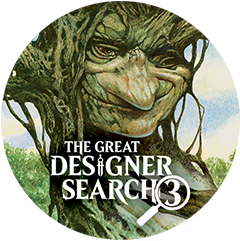
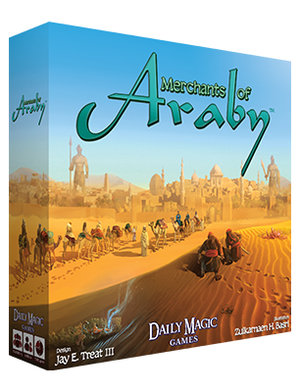
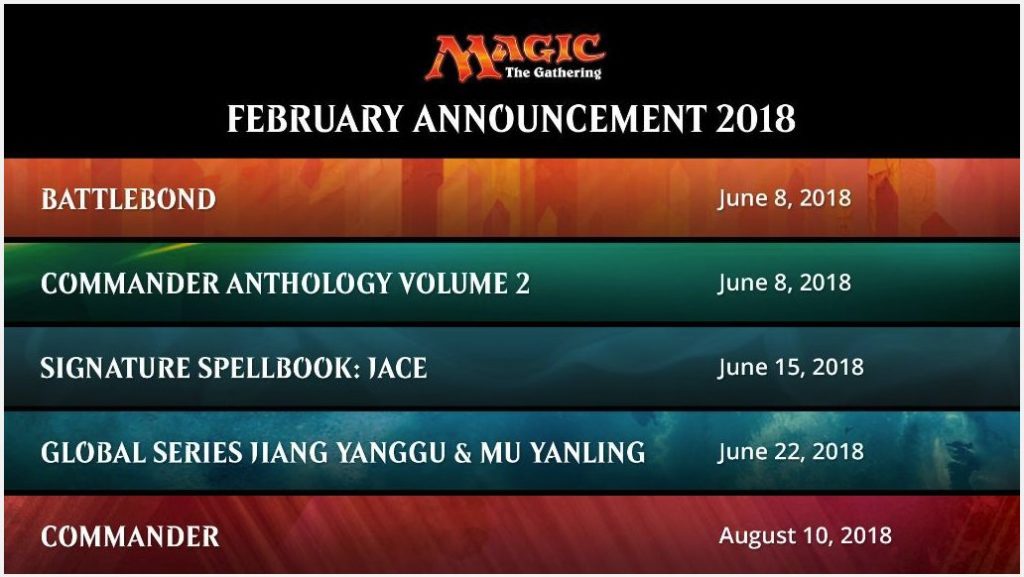
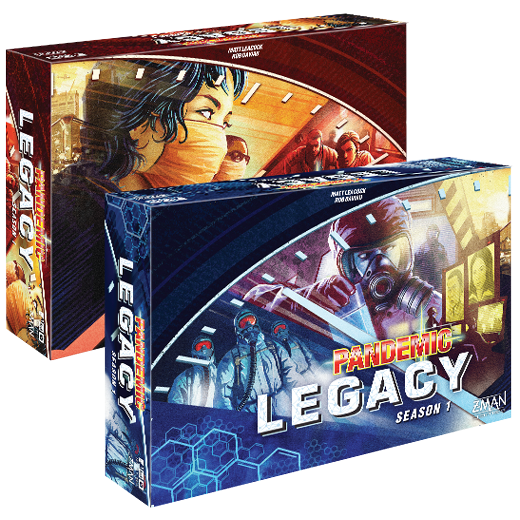
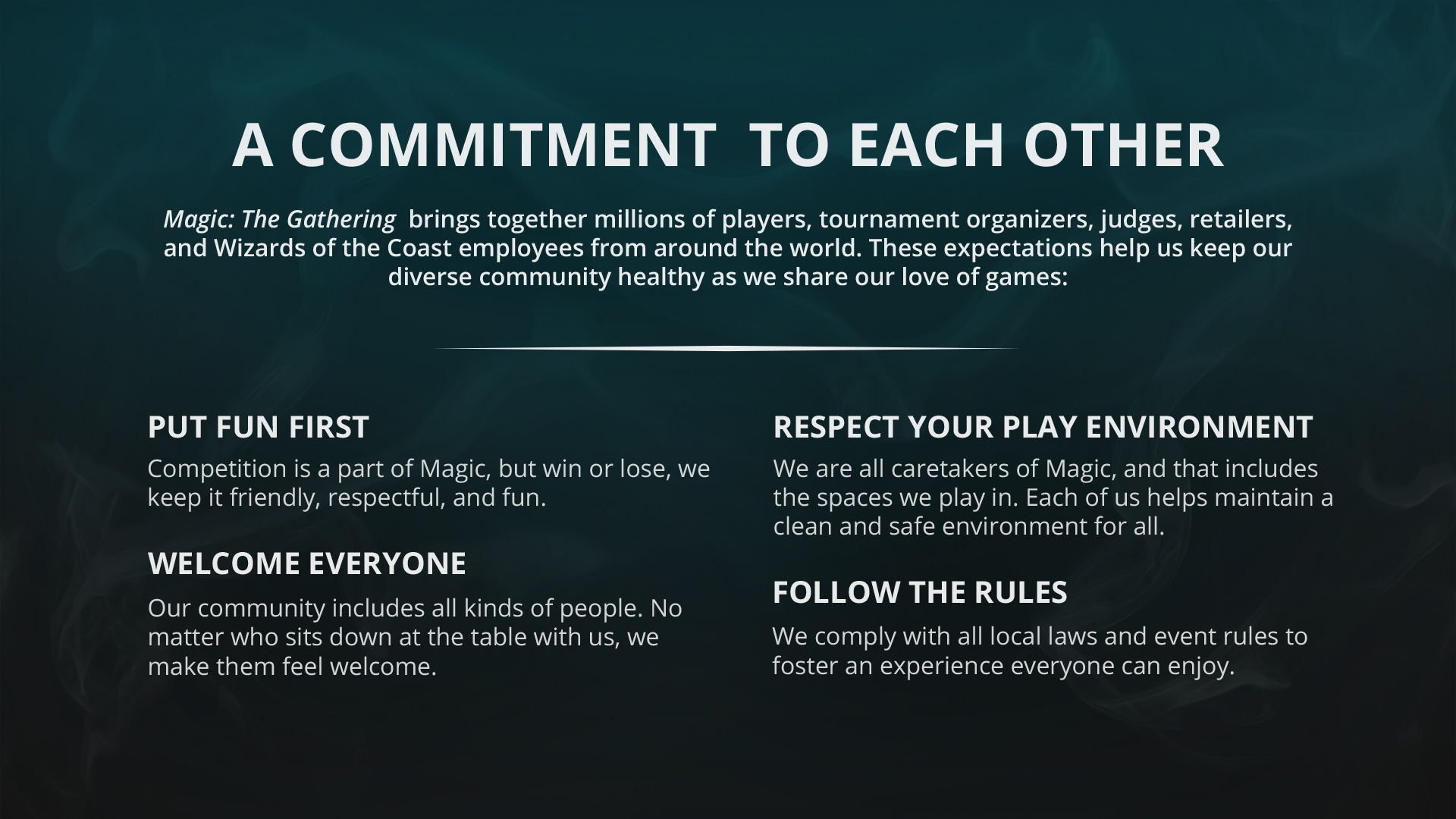
Welcoming Women (and Others) into Magic
ReplyDeleteMagic's Terrible Value Proposition
ReplyDeleteEven though I feel like I made a fair point with #8, that answer sure feels like a cop-out now. I have no idea how the judges felt about it. I guess I could have picked on Maw of the Mire. [shrug]
ReplyDeleteYeah the biggest problem was it was too good. The logistics of using DFC can be annoying.
DeleteGreat answers to 2, 4, and 5 in particular! I never thought about how good 2HG would be for a new player but it’s instantly obvious once you brought it up.
ReplyDeleteI’m also insanely jealous of your answer to #1! :)
Oh sweet, you picked Monstrosity which, after much contemplation, was also my answer!
ReplyDeleteI noticed that.
DeleteGreat minds…
become much bigger when you finally get enough mana.
Aww ... I miss Giant Oyster. That would actually go in my personal "signature spellbook," which probably says an awful lot about how weird my decks were back then.
ReplyDeleteThese are excellent, excellent essays. The best I've read so far. I really respect Jay's willingness to demonstrate his exploration, rather than stating his answer upfront and defending it. It gives the essays a thorough, thoughtful quality that many of the other essayists (mine included) weren't able to achieve. He comes across as a person who's already a Magic designer who simply doesn't work for Wizards yet.
ReplyDeleteAw, thanks Bradley!
DeleteWhen I wrote my essays, for 2 I'd chosen kicker. That was because, like scry, it would be an excellent default mechanic for a game function every set needs that designers could go back to without needing to reinvent the wheel. Ixalan for example was sorely missing mana sinks, and a mechanic that all sets could have to fill the role would have been a benefit.
ReplyDeleteHowever, my biggest problem other than flavor, was the Kavu Titan problem, as you mention in question two. Id looked at other mechanics like flashback and unearth, but I didn't like how they added additional tracking and drew attention to the graveyard when it might not matter in a set. Monstrosity, on the other hand,was an option I hadn't considered much, and that neatly solves my problems with kicker.
However, I did realize some problems I have with it after some thought. The biggest one is the counters constraint. That is to say, not only can it only go in sets with +1/+1 counters, but by having monstrosity you need to be careful how many and in what volume you have them. Theros was careful about how it used counters, and monstrosity might add more constraints to design and hurt more than it helps.
Again, it would obviously be like scry, where its used mainly when a set doesn't have a mana sink mechanic already, but the issue lies in that monstrosity has some constraints that need to be designed around. That's an issue to me because in this case, it'd be the default go to mechanic and thus should require NO constraints to have it in a set. I'm wondering, how do you feel about that?
Glad to hear praise for SOI even if it didn't beat the original I feel it fell in a bad spot, and it was actually the set I chose as my favorite, though that was a tough call between that and OG Innistrad. I felt it was at excellent at EVOLVING what Innistrad was, which was what placed it over for me. It was an exemplar of how you can take a theme and put a twist on it. Innistrad aleady hit a lot of horror tropes, for example. What do we now? How about, make it about a different kind of horror? Those sort of things are what I loved about it.
Monstrosity does have those constraints. As 3 shows, so do many of the current evergreen mechanics. Given how rare sets that don't use +1/+1 counters are, I'm okay with excluding an evergreen mechanic every once in a while.
DeleteAs for being careful with lots of counters, I agree. I actually think Magic uses counters too often. But Monstrosity 1, especially if it's not an any-time activated ability, is all we need to make this work and that shouldn't be terribly problematic.
Hexproof, for example, is already problematic, so I don't think saying that because hexproof has been okay, that having other problematical c evergreen is okay as well. But I get what you mean. The other distinction would be that things like hexproof or deathtouch are more of a card by card basis. Monstrosity's constraints are more set-wide and impact other cards. Thats normal and fine for set mechanics, but as a default mana sink mechanic that should be able to slide into any set that doesn't have its own, I don't love that, but I could be overstating the issue.
DeleteI actually think Monstrosity 1 being most common ouod be least good execution at evergreen-- the issue is that if there's too many counters going around, it can be hard to remember whether you've used for Monstrosity ability. If something does add counters, it's usually not a whole bunch. One of the things Monstrosity leaned on was having a bunch of counters pretty often, which helped catch the eye.
I disagree that magic uses too many counters but the way, but that's just me! The space of using +1/+1 and -1/-1 counters to mark statuses is one I love, starting with Unleash, so.